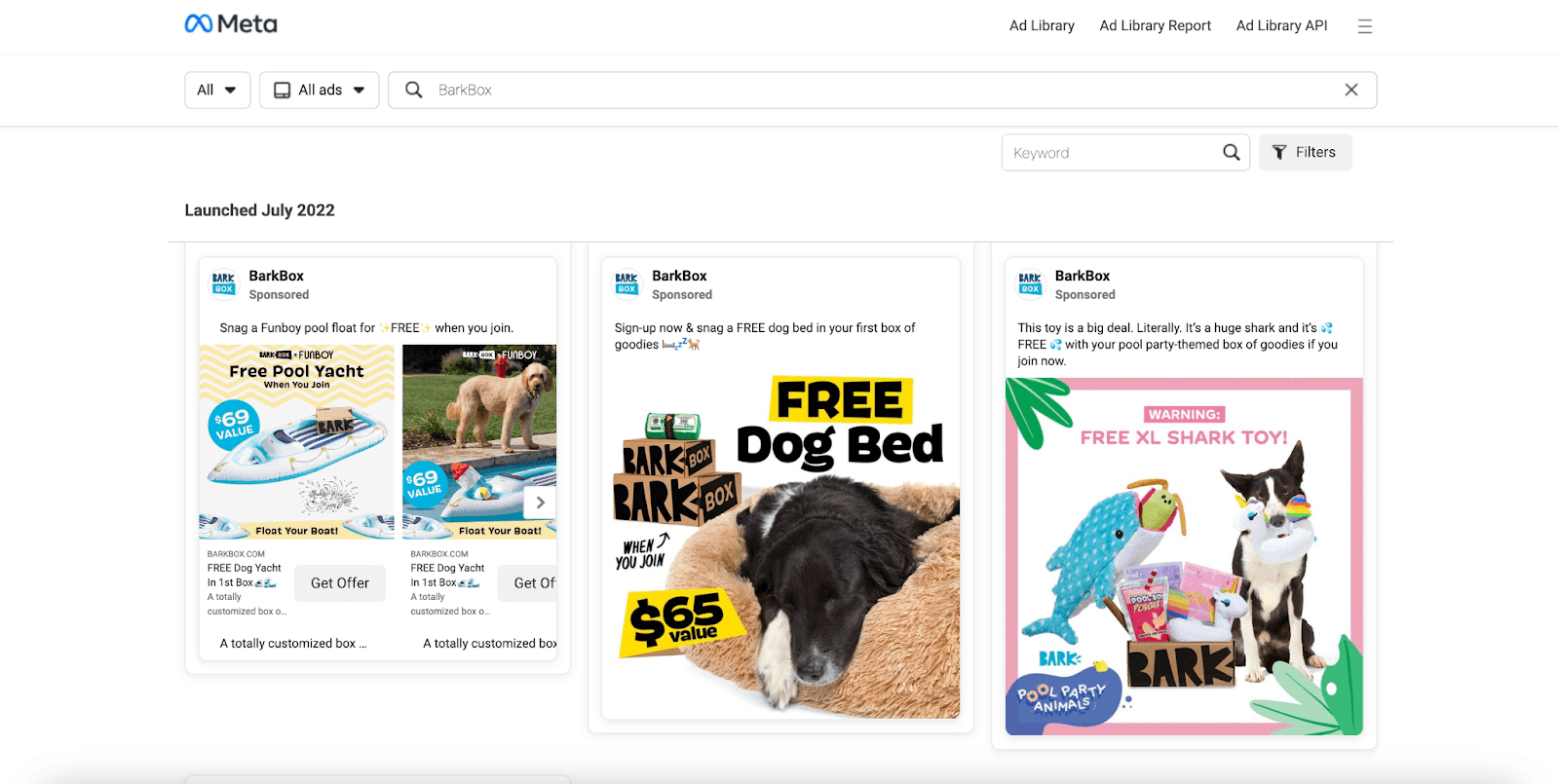A marketing channel strategy is a plan for how a company will reach its customers through various marketing channels. This strategy includes selecting which channels to use, allocating resources to each channel, and setting goals.
Find New Ways To Sell To Your Customers
By carefully analyzing the channels through which customers purchase goods and services, businesses can identify new opportunities for marketing their products. For example, a beauty business that sells products through Etsy may find that many people are searching for similar products via Google. Therefore, investing in an ecommerce platform and search engine marketing may make sense to help drive more sales.
Choosing the right ecommerce platform can also help you save on transaction fees, unify your inventory data, and provide your shoppers with a more branded experience. For instance, the health and wellness brand, Olly, saw a 61% increase in year-over-year sales and saved a forecasted 15k on transaction fees by switching to Shop Pay.
Meet Your Audience Where They Are At
By understanding where your audience spends their time and what type of content they consume, you can more effectively meet them where they are. For example, if your target audience is young adults, you may want to focus your efforts on social media. On the other hand, if your target audience is older adults, you may want to focus on print ads and direct mail.
According to SmallBizGenius, consumers in the 45-54 age bracket are most likely to respond to direct mail. In contrast, those in the Generation Z age are more reachable via social media platforms like Snapchat.
Maximize Your Existing Channels
By taking a holistic view of your business’s marketing channel strategy, you can identify which channels are working well and which need improvement. Let’s say you’re looking to add more budget to your social media marketing campaigns and notice that your Facebook ads are performing twice as well as your Twitter ads. You might consider allocating more of your marketing budget to Facebook and less to Twitter. But don’t stop there! By constantly monitoring your channel performance, you can ensure that your marketing budget always goes to the most effective channels.
Provide A Branded Experience Across All Your Channels
You can ensure that your brand messaging is always on point by developing a clear plan for how you’ll use each channel – from email and social media to your website and blog. Your customers should always know who they’re dealing with when interacting with your brand, no matter what channel they’re using. By providing a consistent experience across all channels, you’ll create a stronger, more recognizable brand that will resonate with your target audience.
1. Social Media
Social media is an essential part of any marketing channel strategy. With billions of users worldwide, platforms like Facebook, Twitter, and Instagram provide unparalleled reach for businesses of all sizes.
Moreover, social media is a highly effective way to connect with potential and current customers. Through engaging content and targeted ads, businesses can build relationships with their audience and cost-effectively promote their products or services.
Recommended Reading: Mobile Marketing Strategy
Barkbox, for example, does a great job at using social media to share funny dog videos and images that get them tons of engagement.

In addition to their organic social media efforts, they also run scroll-stopping ads for their dog toy subscription service to target their ideal customer.
Social media is such a powerful customer engagement and relationship-building tool; it’s no wonder it’s one of the most popular marketing channels in the 2020s.
2. Email & Direct Mail
Email and direct mail both have advantages and disadvantages, so choosing the right one is essential for your business. Or use a combination of both.
Email is a fantastic way to reach a large audience quickly and easily. However, it can be challenging to stand out in a crowded inbox, and if you’re part of a sales team looking for leads, you better have a rock-solid email template.
Craft store Michael’s does a stellar job at creating eye-catching emails that offer their customers value. Their emails are the perfect blend of content and design and are filled with bright colors, easy-to-read text, product suggestions, and hefty coupons.

Direct mail, on the other hand, allows you to send a physical piece that recipients can hold onto and refer back to. It’s also less likely to be immediately ignored than an email. However, direct mail can be more expensive than email, and you must execute it properly to be effective.
Handwritten thank you notes, for example, can be an effective way to increase customer retention. According to an article from Helpscout, Renee Morris from Wufoo said, “out of the roughly 800 customers who received handwritten cards from us last year, 50% fewer folks left our product than those who did not receive cards.”
That’s a meaningful improvement in retention, all thanks to direct mail.
3. Search Engine Marketing
SEM is the process of using paid advertising to improve the visibility of a website on search engine results pages (SERPs). Through effective SEM, businesses can ensure that their website appears prominently in SERPs for relevant keywords, driving more traffic to their site.
The following is an example of search engine marketing at work when you type something like “sustainable shoes” into the Google search bar.
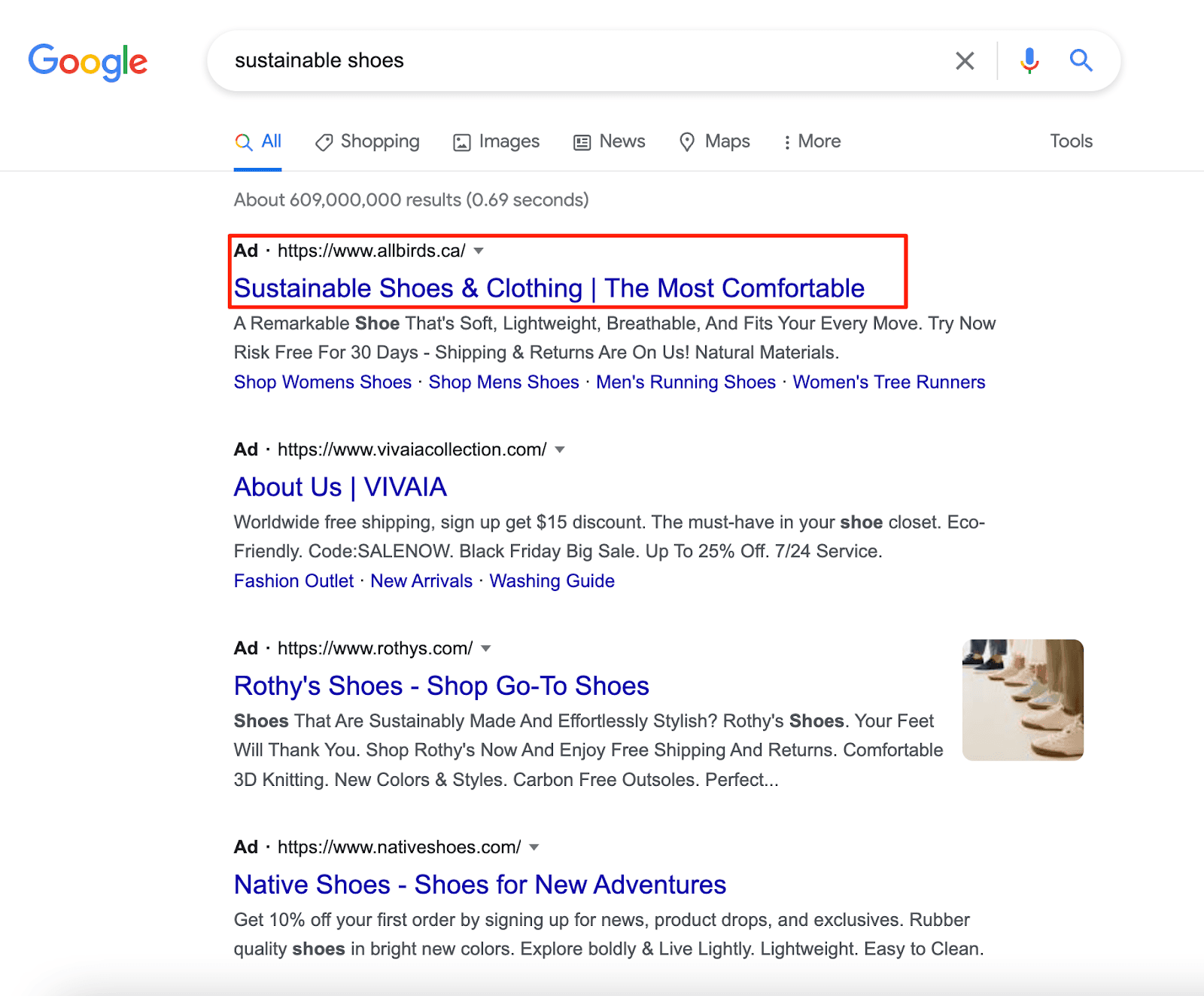
Search engine marketing can prove valuable if your potential customers search for what you’re selling. Google wrote a case study about TravelSmith Outfitters and how they increased e-commerce sales growth by 200% with SEM.
4. Direct To Consumer
Direct to Consumer (DTC) marketing allows companies to build stronger customer relationships by communicating directly with them. Not only does this provide companies with more control over their message, but it also allows them to gather valuable data about their customer’s preferences and needs.
In the past, many companies would wholesale their products to a large retail store which would then markup the cost of their products to be sold to consumers. However, with the rise of digital media, many companies have turned to DTC marketing to reach their target audiences directly. You can use everything from SMS marketing and influencer partnerships to a solid social media presence to reach consumers and sell them products without the need for a middleman.
Retail/Ecommerce
Retail and ecommerce stores that sell their products are examples of the direct-to-consumer strategy. Online stores can implement various ecommerce marketing strategies to help boost sales, increase trust, and maximize customer lifetime value. Fashion Nova, for example, has created a massive online presence with 21.4m followers on Instagram thanks to their customer relationship-building efforts.
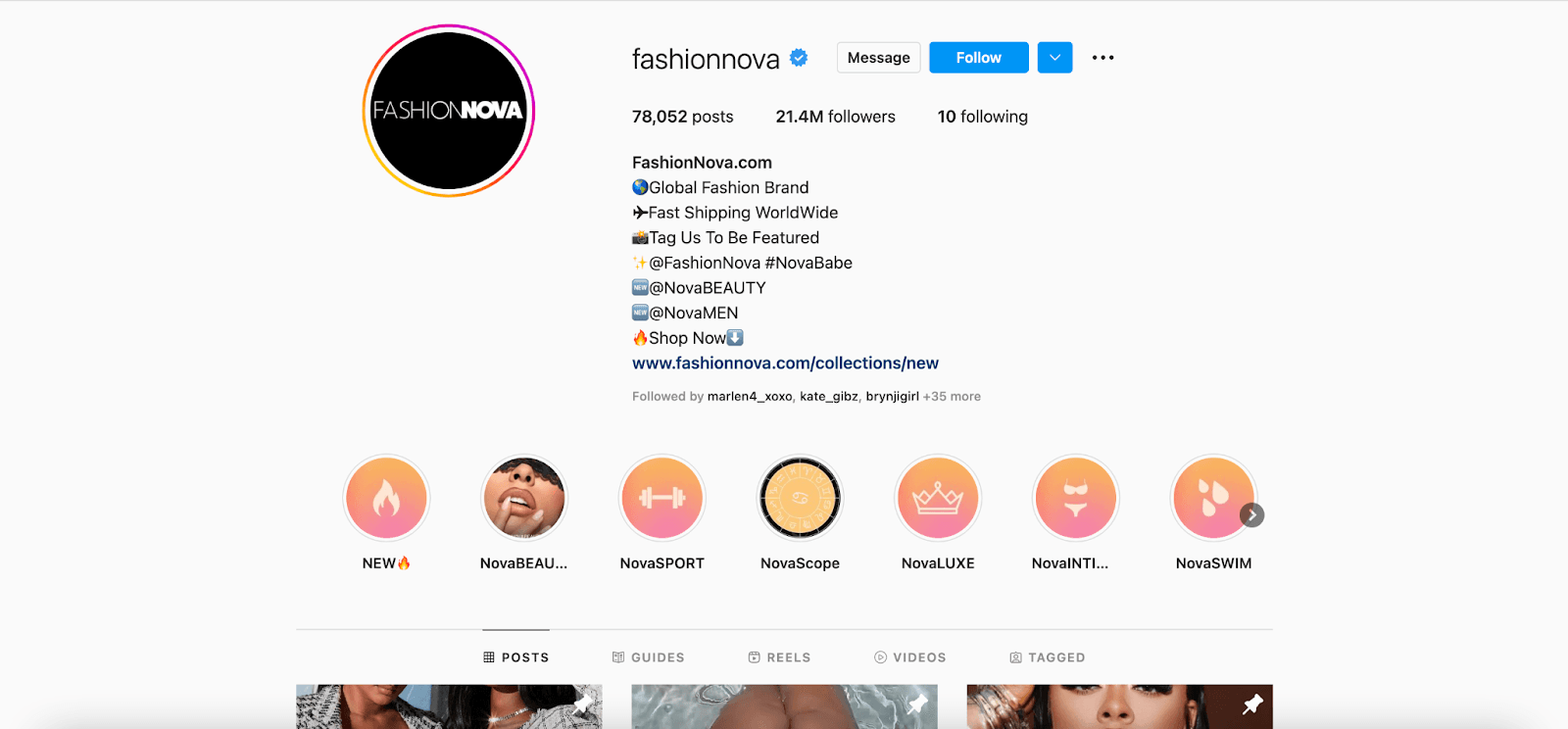
5. B2B
Business-to-business (B2B) describes commerce transactions between businesses, such as when a manufacturer sells component parts to a retailer. The key characteristics of B2B markets include high transaction value, formal contracts, multiple decision makers, and relationships between buyers and sellers. Because of these factors, B2B markets are often much more complex than business-to-consumer (B2C) markets.
Chip manufacturer for Apple products, Taiwan Semiconductors Manufacturing Co., has large contracts to fulfill a certain number of chips every year to Apple. According to Digitimes, TSMC is expected to bring in just over $17 billion from Apple in 2022.
Although B2B partnerships are typically harder to land due to the higher stakes and more stringent expectations, the payoff can be worth the extra effort. After all, a good B2B partnership can open up new doors, help you reach new markets, and boost your bottom line.
6. Partnership Marketing
Partnership marketing is a type of marketing that involves two or more parties working together to promote one business’s products or services in a mutually beneficial way. Partnership marketing can take many different forms, including:
Public Relations
By supporting a good cause and building a PR plan, businesses can create a positive buzz around their products or services. For instance, Coca-Cola partnered with WWF in 2007 to help reduce the environmental impacts of their business by improving water efficiency, reducing carbon emissions, growing sugarcane more sustainably, and more. This helps improve the overall public image of the company while also contributing to a good cause.
Affiliates
By partnering with affiliates, or people who promote your products or services in exchange for a commission, you can reach new customers and grow your business. Affiliates can be effective because they’re often passionate about your products or services and have a built-in audience they can reach. Transferwise, now known as “Wise,” grew its affiliate channel by 15-20% month-over-month by partnering with a high-quality affiliate platform that provides clear reporting, partnership opportunities, and granular analytics.
Ambassadors
Ambassadors are similar to affiliates because they are motivated to share a brand’s products with their followers. Ambassadors aren’t typically paid on a commission basis. Ambassador agreements can range widely in size and scope. From Tiger Woods being an ambassador for Rolex to micro-influencers receiving discounts to shop at their favorite clothing brand in exchange for a shout-out.
Omni-Channel Marketing Strategy
The purpose of an omni-channel marketing strategy is to focus on creating a seamless customer experience across all channels. This experience means building a consistent brand identity and message across all touchpoints, from online to in-store.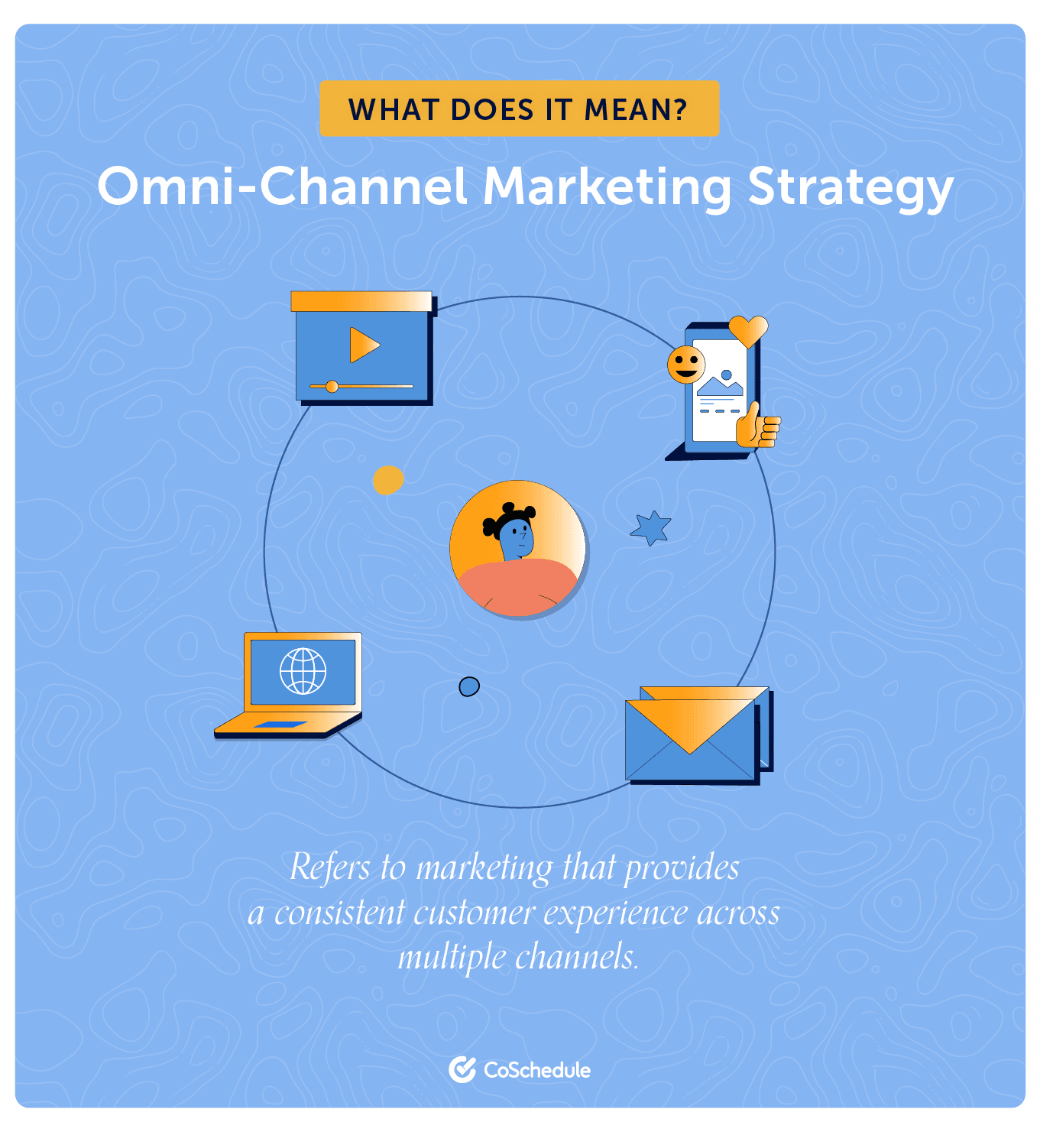 Amazon is an excellent example of an omni-channel approach. They have a variety of channels to keep the user experience integrated, such as Alexa, a mobile app, their online marketplace, Amazon Prime, and more.
Amazon is an excellent example of an omni-channel approach. They have a variety of channels to keep the user experience integrated, such as Alexa, a mobile app, their online marketplace, Amazon Prime, and more.
Multi-Channel Strategy
Multi-channel marketing is the practice of using multiple channels to reach and engage customers. This might include using a combination of traditional and digital channels, such as TV, radio, email, and ads.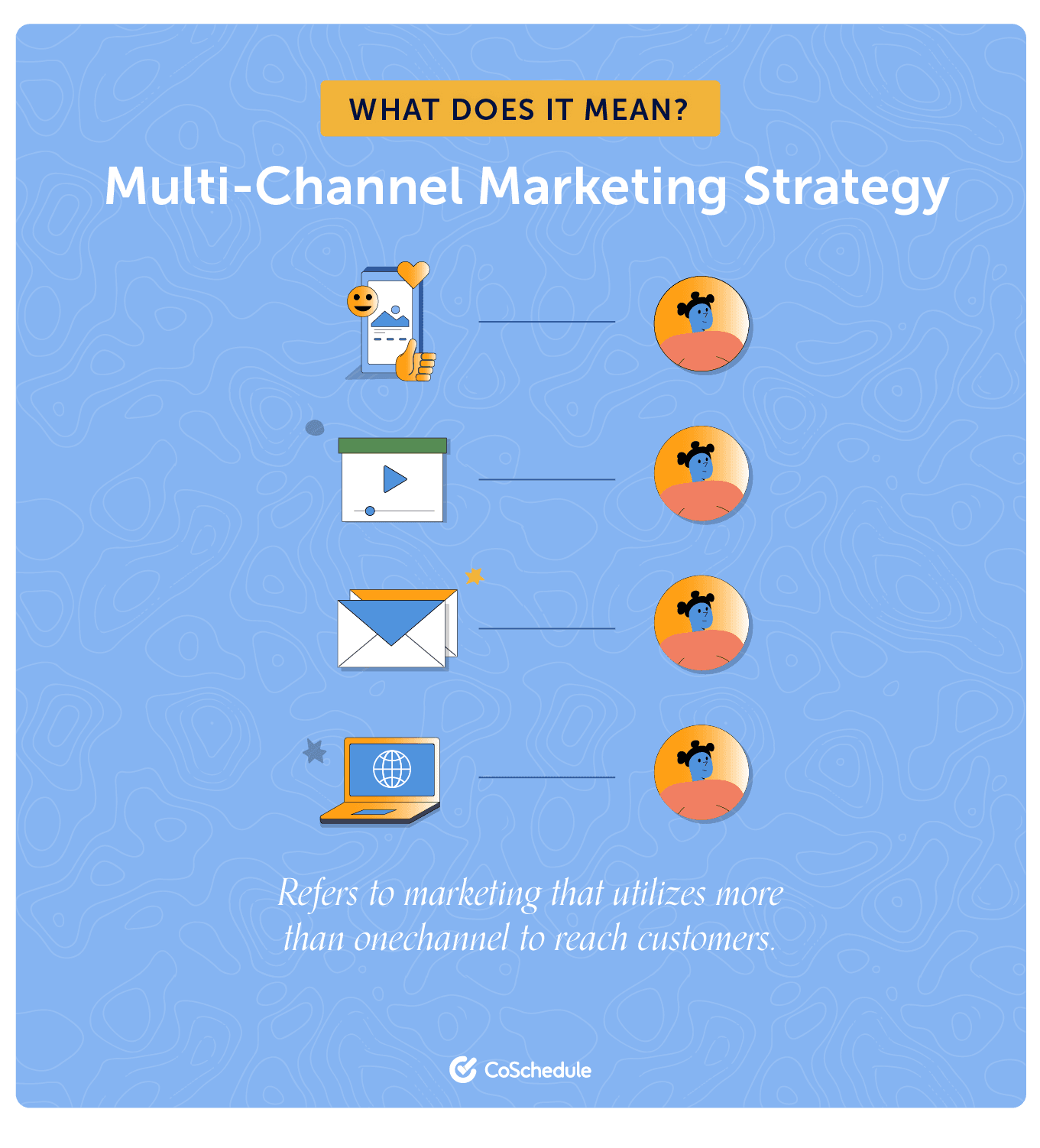 Indestructible Shoes use a multi-channel strategy to target potential customers on platforms like Facebook and Google. They provide similar messaging but use different channels to reach a wider audience.
Indestructible Shoes use a multi-channel strategy to target potential customers on platforms like Facebook and Google. They provide similar messaging but use different channels to reach a wider audience.


- Identify your target audience: By understanding who your target audience is, you can more effectively create content that resonates and reaches them where they are most likely to see it. Several ways to identify your target audience include market research, surveys, paid ad testing, and social media analysis.
- Match customer needs with your channels (put your customers first): Being in tune with what your customers are searching for is essential. For instance, if your potential customers are looking for how to rank higher in the SERPs and your SEO agency can create explainer videos around that topic, starting a YouTube channel might be a valuable strategy.
- Understand the use and best practice for each channel: With various marketing channels, you need to understand the intricacies of each. For example, if you’re using social media, you’ll need to determine the best time to post. You’ll also need to consider what you should post and how to position your brand’s voice.
- Have clear goals for each channel: One way to streamline your marketing efforts is to set clear goals for each channel. If you’re using social media, your goal might be to increase brand awareness or drive traffic to your website. Alternatively, if you’re running an email campaign, your goal might be to generate leads or boost sales. By taking the time to define your goals upfront, you’ll be able to create more targeted and effective marketing campaigns.
- Measure your progress & refine your strategy: Any successful marketing campaign must be evaluated and refined for effectiveness—several critical indicators can measure progress and determine whether or not a campaign is on track. Consider the goals set for the campaign. Are they being met? If not, why not? Keep measuring and refining your strategy until you see the results.

